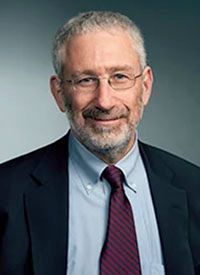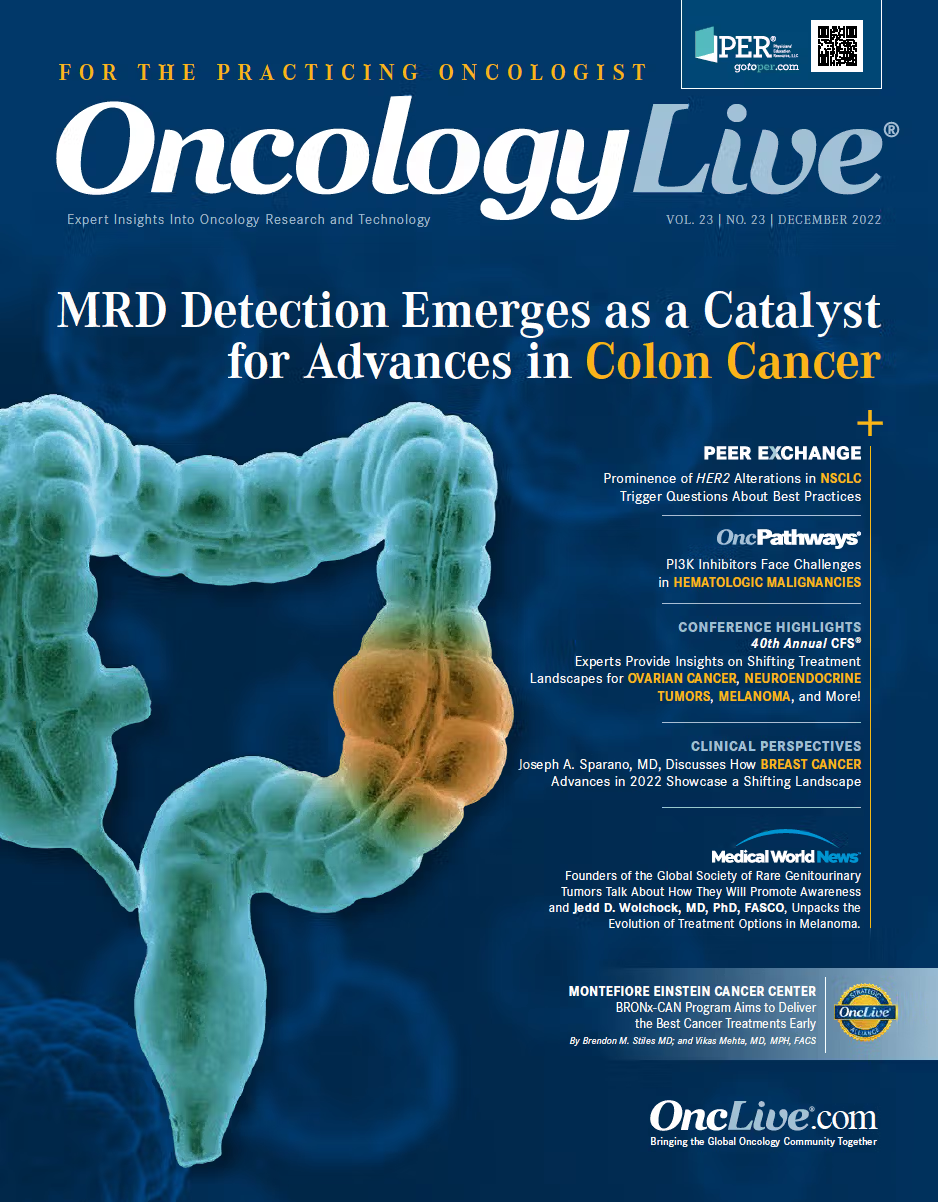Publication
Article
Effective Communication on HPV Vaccination Benefits Is Needed
Author(s):
Several articles in a recent issue of the high-impact journal Science highlight areas of concern in the scientific community that may have detrimental effects on communications regarding the human papillomavirus vaccination as a cancer prevention strategy.
Maurie Markman, MD

Several articles in a recent issue of the high-impact journal Science highlight areas of concern in the scientific community that may have detrimental effects on communications regarding the human papillomavirus (HPV) vaccination as a cancer prevention strategy.
The first, titled “Making Trouble,” features the controversy surrounding recent reports from research groups studying viruses to artificially increase their pathogenicity in laboratory experiments. Justification for these efforts include understanding how specific mutations may occur in nature, the mechanisms of their destructive effects, and the development of strategies to treat or prevent an infection through antiviral medications or vaccination.1
Of course, the worry for such experimentation is that a laboratory accident might permit the more dangerous virus to escape the confines of even the most well-designed high-containment laboratory.1 Specific concerns for such an event in a virus research laboratory have been widely expressed and represent one rational (and still not disproven) explanation as the critical event initiating the COVID-19 pandemic.1
The point being highlighted here is the current effectiveness of the oversight of basic scientific research with pathogenic viruses in the United States and societal trust that the scientific community and responsible governmental agencies can effectively regulate dangerous approaches to research to ensure public safety.
The topic of the second article concerned the evolving debate related to potential heart risks associated with COVID-19 vaccine boosters.2 Existing evidence supports the rare risk of vaccine-associated myocarditis, which appears to be most evident in older boys and young men. The incidence of this event has been well documented at far less than 0.1%, even among individuals with the greatest demonstrated risk and most of those affected quickly recover.
The third article highlights the problematic quality of data used by a state governmental health leader in pronouncements related to COVID-19 vaccination efforts.3 The data in question were from “an unattributed study apparently showing the risk of heart complications from mRNA vaccines [for] COVID-19 makes [the vaccines] harmful for [men] under 40.”3
As one well-respected scientific figure, Eric Topol, MD, noted, this public authority’s “dissemination of flawed data that purports a risk of cardiac death among men aged 18 to 39 [years] after mRNA vaccines was baseless, reckless, and irresponsible. The risk of myocarditis in this demographic is real and notable, but all studies with close follow-up have indicated it is typically mild and fully resolves in nearly all affected.”3
Where are we as a society when questions are being raised by governmental officials and members of the public regarding the necessity of oversight for the conduct of scientific research that may pose a legitimate threat to our safety? When declarations of governmental health officials are challenged and are not in agreement with the recommendations of other scientific experts and members of the public health community, what is the public to believe?
The concerns highlighted by these 3 articles are magnified by the complexity of many clinically related issues and the tsunami of misinformation showering the public through a variety of social media channels.4 There is a vital need for more effective efforts to educate the public on the critical role objective science has in our modern lives. However, it is far easier to make such a statement than to accomplish this goal.
Through the Lens of HPV Vaccination
It is with this background in mind that we consider the epidemiology of certain human cancers and the demonstrated truly remarkable safety and effectiveness of HPV vaccination in cancer prevention.
Based on nationally reported data from 2012 to 2016, approximately 44,000 new HPV-associated cancers are diagnosed each year in the United States. Among these, approximately 80% can be attributed to persistent HPV following an earlier infection. This yearly number includes cases of oropharyngeal (12,000 cases), cervical (9700 cases), anal (6000 cases), vulvar (700 cases), penile, and vaginal cancers (600 cases). Further, 92% of the cancer-associated HPV types are included in the 9-valent vaccine routinely employed for vaccination.5
Turning to the issue of the effectiveness of HPV vaccination, a meta-analysis of extensive peer-reviewed medical literature revealed that “after 5 to 8 years of vaccination, the prevalence of HPV-16 and HPV-18 decreased significantly by 83% among girls aged 13 [to] 19 [years] and decreased significantly by 66% among women aged [20 to 24 years].”6 Impressive and statistically significant decreases were observed in boys in the incidence of anogenital warts and in the finding of cervical intraepithelial neoplasia grade 2+ among screened girls (aged 15 to 19 years) and women (aged 20 to 24 years).6
Although population-based data have revealed the objective effectiveness of HPV vaccination in reducing the prevalence of the highly pathogenic HPV-16 and HPV-18 types among those vaccinated, benefit has also been observed (although not to the same degree) among individuals who have never received the HPV vaccine.7, 8
Finally, evolving data have confirmed the simply stunning impact of a highly successful national HPV vaccination program in the reduction of cervical cancer in England. The authors of an article in The Lancet concluded, “The HPV immunization program has successfully almost eliminated cervical cancer in women born since September 1, 1995.”9
In the opinion of this commentator existing data provide substantial support for our ability to prevent a large majority of HPV infection–associated cancers through the remarkably safe and effective strategy of vaccination. It would be a tragedy of immense proportions if mistrust of science,10 the lack of effective public education regarding the vital role of this cancer-causing virus,11 and profoundly disturbing misinformation regarding HPV vaccination are permitted to seriously inhibit progress toward attainment of this major public health outcome.12
Maurie Markman, MD, is president of Medicine & Science at Cancer Treatment Centers of America, a part of City of Hope.
References
- Kaiser J. Making trouble. Science. October 19, 2022;378(6617):242-245. doi:10.1126/science.adf3764
- Couzin-Frankel J. Heart risks fuel debate over COVID-19 boosters Science. October 17, 2022; 378(6617):234-235. doi:10.1126/science.adf3945
- Thorp HH. Remember, do no harm? Science. 2022;378(6617):231. doi:10.1126/science.adf3072
- Osborne J, Pimentel D. Science, misinformation, and the role of education. Science. 2022;378(6617):246-248. doi:10.1126/science.abq8093
- Senkomago V, Henley SJ, Thomas CC, Mix JM, Markowitz LE, Saraiya M. Human papillomavirus-attributable cancers - United States, 2012-2016. MMWR Morb Mortal Wkly Rep. 2019;68(33):724-728. doi:10.15585/mmwr.mm6833a3
- rolet M, Bénard E, Pérez N, Brisson M; HPV Vaccination Impact Study Group. Population-level impact and herd effects following the introduction of human papillomavirus vaccination programmes: updated systematic review and meta-analysis. Lancet. 2019;394(10197):497-509. doi:10.1016/S0140-6736(19)30298-3
- Shahmoradi Z, Damgacioglu H, Montealegre J, et al. Prevalence of human papillomavirus infection among women born in the 1990s vs the 1980s and association with HPV vaccination in the US. JAMA Health Forum. 2022;3(8):e222706. doi:10.1001/jamahealthforum.2022.2706
- osenblum HG, Lewis RM, Gargano JW, Querec TD, Unger EF, Markowitz LE. Human papillomavirus vaccine impact and effectiveness through 12 years after vaccine introduction in the United States, 2003 to 2018. Ann Intern Med. 2022;175(7):918-926. doi: 0.7326/M21-3798
- Falcaro M, Castañon A, Ndlela B, et al. The effects of the national HPV vaccination programme in England, UK, on cervical cancer and grade 3 cervical interaepithelial neoplasia incidence: a register-based observational study. Lancet. 2021;398(10316):2084-2092. doi:10.1016/S0140-6736(21)02178-4
- Baron RJ, Berinsky AJ. Mistrust in science - a threat to the patient-physician relationship. N Engl J Med. 2019;381(2):182-185. doi:10.1056/NEJMms1813043
- Suk R, Montealegre JR, Nemutlu GS, et al. Public knowledge of human papillomavirus and receipt of vaccina-tion recommendations. JAMA Pediatr. 2019;173(11):1099-1102. doi:10.1001/jamapediatrics.2019.3105
- Damgacioglu H, Sonawane K, Chhatwal J, et al. Long-term impact of HPV vaccination and COVID-19 pandemic on oropharyngeal cancer incidence and burden among men in the USA: a modeling study. Lancet Reg Health Am. 2022;8:100143. doi:10.1016/j.lana.2021.100143










